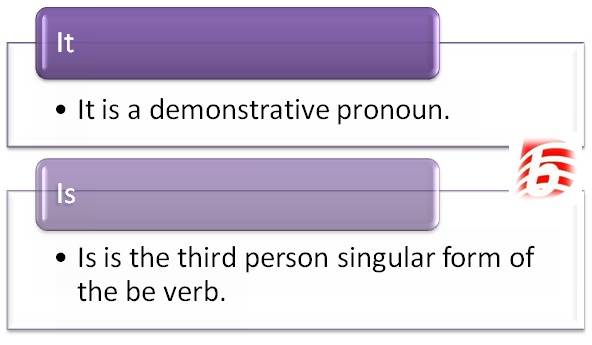It vs Is
Understanding the difference between “it” and “is” is helpful because of their distinct usage in English grammar. “It” is a pronoun and “is” is a verb. Both have various uses in English grammar and are frequently used in the language. To be precise, “is” is the third person singular form of the “be” verb. In this article, we will look at the differences between “it” and “is” in depth.
What does It mean?
As a pronoun, “it” is mainly used for “referring to an animal or child of unspecified sex.” For example:
The dog kept on barking. It surely did not like the stranger.
Amanda was holding her baby while her husband caressed its head.
“It” is a demonstrative pronoun, indicating something being discussed or described. For instance, in the sentence “it is lovely to look at,” you have already mentioned a rose, and in saying “it is lovely to look at,” you are referring to the same rose with the demonstrative pronoun “it.”
The word “it” is also used to convey a sense of generality, as in the example, “it is good to speak the truth.” In this sentence, the word “it” conveys the general idea of speaking the truth at all times.
What does Is mean?
The word “is” is an auxiliary verb, an indirect verb that implies the meaning of “to be.” It conveys the idea of presence. For example, in the sentences “he is in Australia” and “the book is on the table,” the verb “is” gives the idea of someone being present in Australia and the book being present on the table, respectively.
The word “is” is also used in the present continuous tense as an auxiliary verb. For example, in the sentence “he is looking at me,” the word “is” conveys the present continuous tense, suggesting that the action of looking is happening at the moment the speaker is speaking.
Additionally, the word “is” is used to express confirmation. When someone says “yes, it is,” a sense of confirmation is understood as the speaker’s intention.
Key Takeaways
- It is a pronoun, while Is is a verb.
- It is a demonstrative pronoun, whereas Is is the third person singular form of the be verb.
- The verb Is is used in the present continuous tense as an auxiliary verb and to express confirmation.
